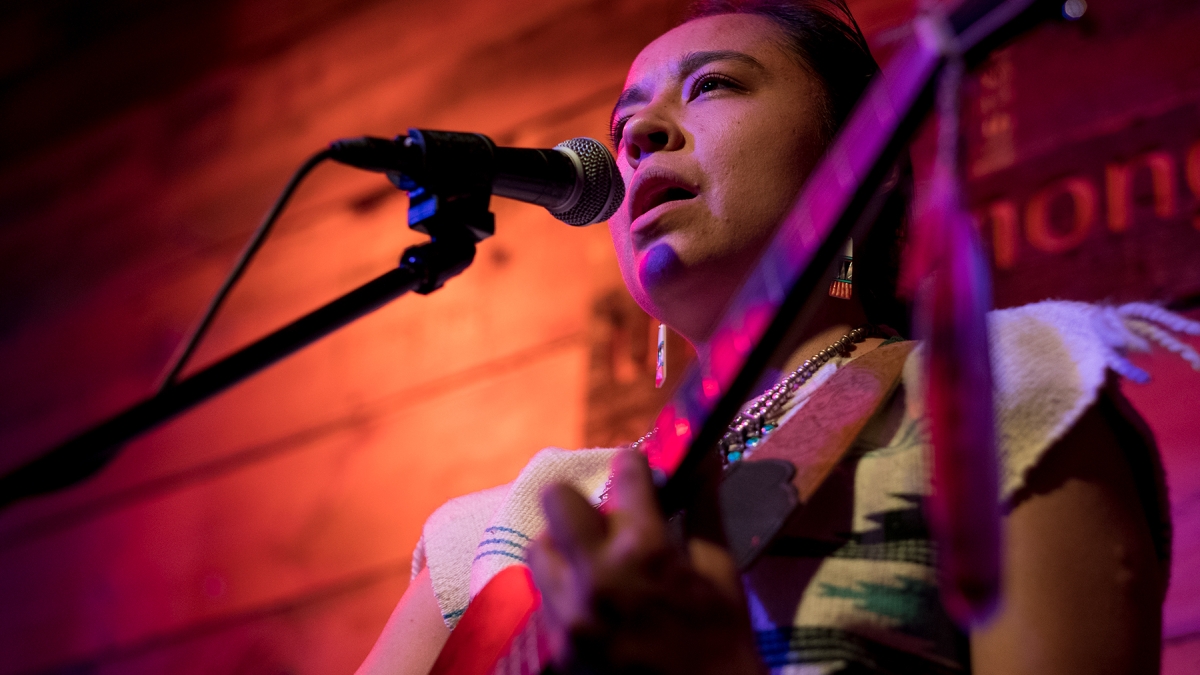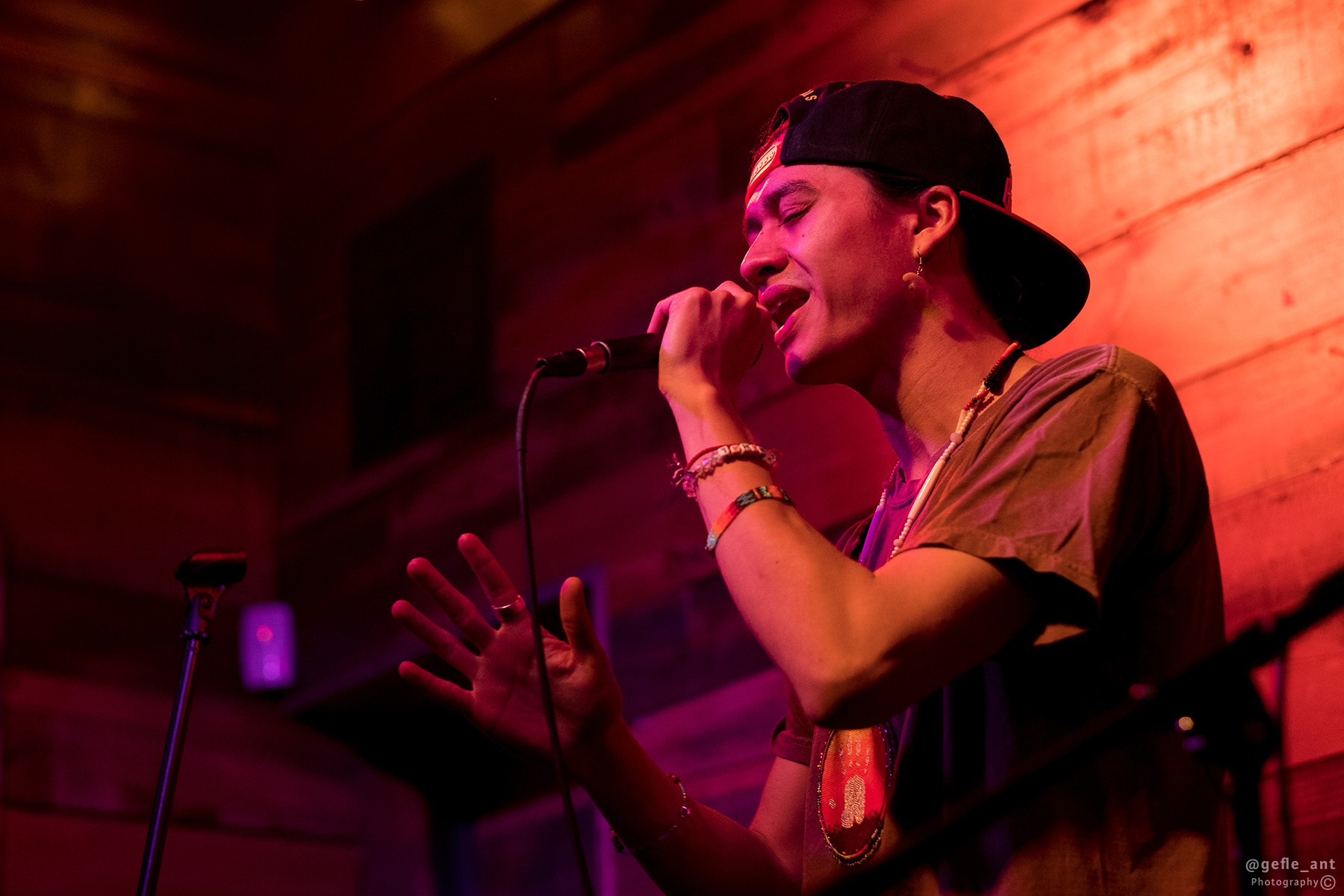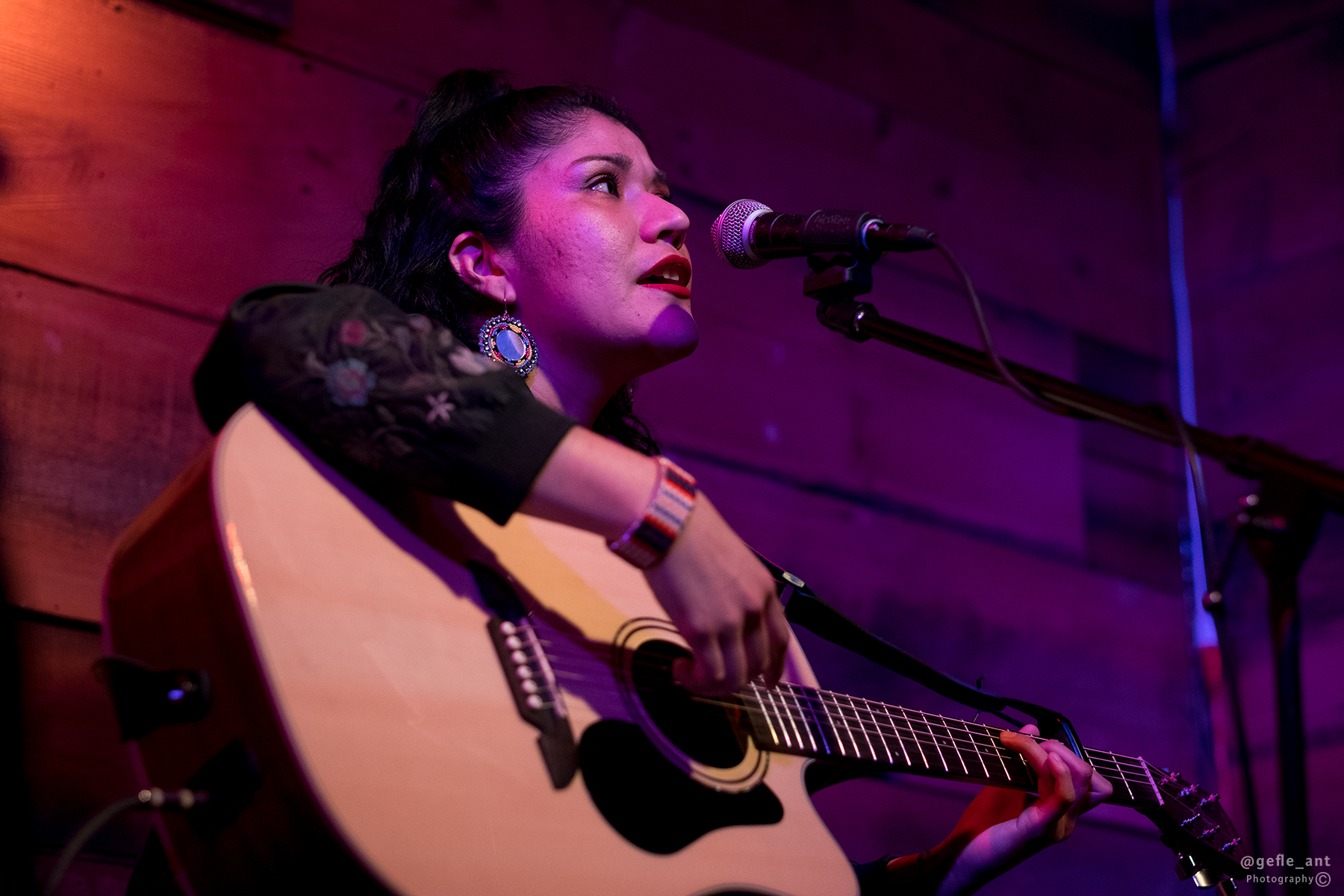With its emerging skyline, newly renovated stadium and continual growth, sometimes it’s easy to forget that Arizona State University’s Tempe campus sits on the ancestral homelands of American Indian tribes, including the Akimel O’odham (Pima) and Pee Posh (Maricopa) peoples.
But part of the university's growth is reflected in the record amount of indigenous students enrolled, a fact that will be celebrated with music performances, workshops, conversations and panel discussions this week.
Poetry Across the Nations, a national Native reading series, is collaborating with the American Indian Council, the Center for Indian Education and [archi]TEXTS to bring Dream Warriors, a collective of Native American artists, to ASU's Tempe campus to kick off their national “Heal It Tour." Their Sept. 6-7 appearance includes two days of sharing, self-empowerment and healing.
“ASU is a Native space, even though it doesn’t always seem this way,” said Natalie Diaz, an associate professor in ASU’s Department of English and a renowned poet, who founded both Poetry Across the Nations and [archi]TEXTS. “As I have made ASU my new home, my priority is to find ways to connect our Native students and artists to the work of other people like them, to show them what is possible, and what Native students and artists are capable of. It’s a no-brainer to invite the Dream Warriors to ASU."
Hip-hop artist and Rosebud Sioux Tribe member Frank Waln will be visiting ASU's Tempe campus on Sept. 6-7 as part of the Dream Warriors national tour.
The Dream Warriors consist of artists Frank Waln, Tall Paul, Mic Jordan, Tanaya Winder and Lyla June. Together they will speak, perform and teach self-empowerment to help others find healthy outlets to address personal, historical, ancestral and intergenerational traumas through art and discussions. Award-winning indigenous playwright Larissa Fasthorse and ASU’s Bryan McKinley Jones Brayboy will join the conversation.
“Our message to Native students has been very clearly 'You belong here!' Our work with the Dream Warriors is another way that we are striving to make ASU a place where students feel like they belong," said Brayboy, President’s Professor, director of the Center for Indian Education and ASU’s special adviser to the president on American Indian affairs. "These incredible artists bring messages of hope, accomplishment and inclusion. In many ways, they are perfect representatives for the work of ASU. I am, personally, a huge fan of them; being able to share them with the ASU community is a gift to us all.”
Native college students are in a stage of life where they are trying to find purpose, often times in an education system that lacks awareness of Native needs, said June, a singer, multi-instrumentalist and motivational speaker who holds a master’s degree in English from Stanford University.
“I talk a lot about helping them navigate that system,” June said. “I try and remind them that their ancestral epistemology and ancestral curriculum is just as important as the Western curriculum, and they need to hold onto that to find their true purpose."
June, who is both Diné and Cheyenne, said the goal of many indigenous societies is to improve the larger community.
“A lot of my music is to be a good relative to the rest of humanity,” she said. “To me, that means helping people to heal.”
Some of the topics that will be broached include indigenous masculinity, gender identity, art, traditions, community, healing and “all of the ways we move in the world,” Diaz said.
Healing can come in many forms, including music, said hip-hop artist Waln, a member of the Rosebud Sioux Tribe in South Dakota.
“The Native artists who are successful are able to articulate a truth beyond tribal boundaries,” Waln said. “As indigenous people, we deserve to be healthy, happy, respected and successful in places such as academia, which traditionally aren’t made for us.”
Dream Warrior organizer and indigenous artist Tanaya Winder will perform, sing and speak to Native American students on the national "Heal It Tour."
The tour coincides with the news that ASU now has cracked the 3,000 markThe 3,000+ count for Fall 2018 is based on students self-identifying solely as American Indian or in addition to another race/ethnicity. Last year 2,812 self-identified as Native Americans. That number has increased to 3,009, which is a preliminary number based on the first day of class. The number won't become official until the 21st day of class, according to the Office of Institutional Analysis. for American Indian enrolled students at the university, an increase of 7 percent from last year. The number represents approximately 2.7 percent of the university’s total student body, according to ASU's Office of Institutional Analysis.
“There are a number of deans, faculty, staff, alums, tribes, donors and students that deserve credit helping us consistently grow these numbers,” said Jacob C. Moore, associate vice president of tribal relations in the Office of Government and Community Engagement. “Even though this is a significant accomplishment, we now have a duty to support each student’s academic success.”
One Dream Warrior said the milestone is reason enough for celebration.
“Reaching the 3,000 mark is amazing. It’s awesome,” Winder said. “The more representation, the more access we have and the more support we get helps set us up to pursue what makes us happy. I love seeing a major institution reaching that milestone.”
Dream Warriors Tour
All events of the Heal It Tour are free.
- 11:30 a.m. Thursday, Sept. 6 — “Reimagining Indigenous Identities and Relationships. Conversations with Dream Warriors." Student Pavilion, Senita A.
- 2 p.m. Friday, Sept. 7 — Poetry and Songwriting Workshop with Dream Warriors. The Secret Garden, West 135.
- 7 p.m. Friday, Sept. 7 — Poetry Across the Nations Presents: A Performance by Dream Warriors. Memorial Union, Pima Auditorium.
Photos courtesy of Magnus, @gelfie_ant
More Arts, humanities and education

ASU professor's project helps students learn complex topics
One of Arizona State University’s top professors is using her signature research project to improve how college students learn science, technology, engineering, math and medicine.Micki Chi, who is a…

Award-winning playwright shares her scriptwriting process with ASU students
Actions speak louder than words. That’s why award-winning playwright Y York is workshopping her latest play, "Becoming Awesome," with actors at Arizona State University this week. “I want…

Exceeding great expectations in downtown Mesa
Anyone visiting downtown Mesa over the past couple of years has a lot to rave about: The bevy of restaurants, unique local shops, entertainment venues and inviting spaces that beg for attention from…




